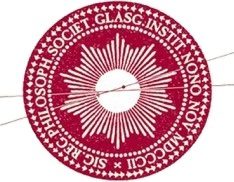Overview
There is not much currently known about this Burns club. The details we have come from the 1912 Annual Burns Chronicle and Club Directory. The group met at the Christian Institute on Bothwell Street (to the west of the city centre) on the second Wednesday of each month at 8pm. This club was clearly a pro-temperance group, as it makes clear in the listed objects of the club in the directory:
‘The cairrying furrit o’ the memory o’ oor ain Poet Rabbie Burns, and the better learning o’ its members, by sic weys as may frae ae time tae anither be faun’ suitable; in lectures, essays, short papers, and harmony nichts; and run on temperance principles.
(‘No. 206-GLASGOW Daisy Burns Club’, ‘Directory of Burns Clubs and Scottish Societies on the Roll of the Burns Federation, 1912’, in BC, ed. by D. M’Naught, No. XXI (Kilmarnock: Burns Federation, January 1912), p. 186)
Date of Existence
13 September 1911-? Federated 14 October 1911
Source of Information
‘Directory of Burns Clubs and Scottish Societies on the Roll of the Burns Federation, 1912’, in BC, ed. by D. M’Naught, No. XXI (Kilmarnock: Burns Federation, January 1912), p. 186
Repository
Mitchell Library Special Collections (MLSC)
National Library of Scotland (NLS)
Reference Number
BNS19BUR (MLSC) (Annual Burns Chronicle)
General Reading Room (stored offsite), Y.233, available no. 1-34 25th Jan. 1892-Jan. 1925 (NLS) (Annual Burns Chronicle)
Additional Notes
‘BC‘ refers to the Annual Burns Chronicle and Club Directory, which was published yearly since 1892. Hard copies are available at the Mitchell Library Special Collections and the National Library of Scotland. Many of them have been digitised and are available through the Robert Burns World Federation website: http://www.rbwf.org.uk/digitised-chronicles/.
This list of Burns chronicles as sources of information gives the first year the club was included in the chronicle, and thereafter only for the years where the information is different from the previous year’s listing. In keeping with the scope of this study (1800-1914), only the chronicles published between 1892 and 1914 are included.
